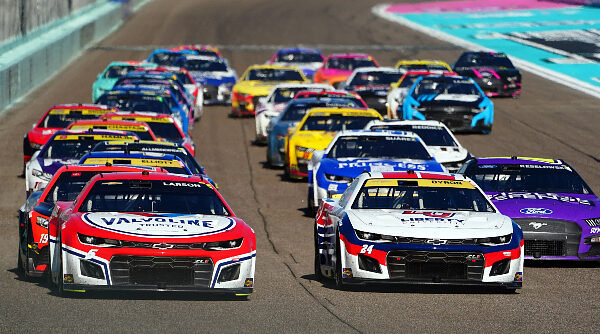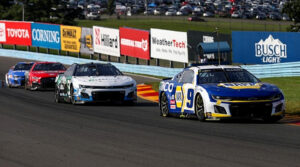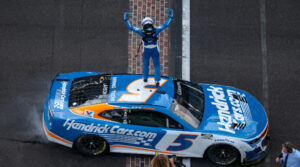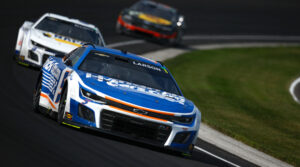NASCAR: Full Speed – Fully Dissected

Netflix’s recent series, “NASCAR – Full Speed,” has taken fans behind the curtain to explore the highs and lows of the sport. While the series successfully introduced potential new fans to the adrenaline-fueled world of racing and captured the raw emotions behind the scenes, it wasn’t without its bumps on the track.
The Good:
1. Introduction to the Sport:
The potential to introduce new fans to NASCAR is commendable. The series delved into the heart of the sport, showcasing the passion, dedication, and camaraderie that define the NASCAR experience.
2. Emotional Depth:
“NASCAR – Full Speed” successfully captured the behind-the-scenes emotions, shedding light on the drivers’ personal lives. Notably, the portrayal of drivers’ wives and girlfriends as emotionally invested partners revealed the human aspect of the sport, as did interview clips with parents of drivers.
3. On-Track Excitement:
The series effectively conveyed the excitement on the track and showcased the unique personalities of the drivers behind the wheel. This not only entertained existing fans but also had the potential to draw in new ones.
4. Insights into Preparation:
While there is room for improvement, the series did provide glimpses into the preparation involved in getting ready for a race. However, a more detailed exploration of the intricate behind-the-scenes work could enhance future installments.
5. Balance and Realism:
Unlike its Formula 1 counterpart, “NASCAR – Full Speed” refrained from overdramatization. The series resisted the temptation to blow minor incidents out of proportion or delve into non-racing minutia, such as dissecting social media posts as seen on F1’s “Drive to Survive.” This commitment to realism allows fans to appreciate the genuine, unfiltered essence of NASCAR without unnecessary sensationalism.
The Missed Opportunities:
1. Playoffs Confusion:
Starting the series with the playoffs may have left some viewers scratching their heads, especially those unfamiliar with the sport. A more comprehensive introduction to the season structure would have been beneficial to prevent confusion.
2. Incomplete Driver Portrayals:
An intense focus on Denny Hamlin and Bubba Wallace totally dominated the initial episodes, leading to social media backlash. Except for Ryan Blaney, Chev and Ford drivers received much less coverage, and some playoff drivers were omitted completely. A more balanced approach, covering all playoff drivers with equal attention, would have provided a more inclusive narrative.
3. Context for Fan Backlash:
The series addressed fan backlash for Hamlin and Wallace but failed to effectively delve into the reasons behind it. A lack of context left the door open for misinterpretation, especially for newcomers who might not understand the complexities of driver relationships on and off the track.
4. Rushed Storytelling:
Condensing 10 playoff races into just 5 episodes left significant gaps in the storytelling. A more extended series would allow for a more thorough exploration of each race and the journeys of key drivers, preventing the omission of crucial moments.
Looking to the Future:
In the rearview mirror of “NASCAR – Full Speed,” the road ahead suggests an opportunity for improvement. If NASCAR decides to produce another series based on the 2024 season, a less biased approach with a more comprehensive, fleshed-out story is essential. Balancing coverage, providing context, and ensuring a more thorough representation of all playoff drivers will create a more engaging and inclusive narrative for both die-hard fans and those just getting up to speed with the sport.




